- Преподавателю
- Иностранные языки
- Describing people - Описание людей
Describing people - Описание людей
| Раздел | Иностранные языки |
| Класс | - |
| Тип | Другие методич. материалы |
| Автор | Шашкина А.А. |
| Дата | 24.02.2015 |
| Формат | docx |
| Изображения | Есть |


Министерство образования и науки Самарской области
государственное бюджетное образовательное учреждение среднего профессионального образования
ТОЛЬЯТТИНСКИЙ МАШИНОСТРОИТЕЛЬНЫЙ КОЛЛЕДЖ
Методическая разработка по дисциплине «Английский язык»
на тему: «Describing people»
Описание людей

Тольятти 2013-2014 уч. год
«одобрено»
методической комиссией
Председатель
_________ Шмелева Н.П.
_________________2013г.
«СОГЛАСОВАНО»
Зам. директора по НМР
__________С.А.Свитов
_______________2013г.
«УТВЕРЖДАЮ»
Зам. директора по учебной работе
_________________ А.Н. Мазаев
_______________________ 2013 г.
Составитель: ___________Шашкина А.А., преподаватель английского языка ГБОУ СПО ТМК
Методическая разработка по теме «Describing people» разработана на основе Федерального государственного образовательного стандарта (далее - ФГОС) по специальности среднего профессионального образования (далее - СПО).
Методическая разработка предназначена для проведения уроков по английскому языку среди студентов II-ого курса.
ГБОУСПО ТМК, 2013
Пояснительная записка
Методическая разработка по теме «Describing people» разработана на основе Федерального государственного образовательного стандарта (далее - ФГОС) по специальности среднего профессионального образования (далее - СПО), предназначена для проведения уроков по иностранному языку среди студентов II-ого курса.
Цель разработки - научить студентов описывать внешность людей, используя тематическую лексику, необходимую грамматику и стиль речи.
Основными задачами пособия являются:
-
обучающая задача - формирование у учащихся навыков и умений описывать внешность людей, используя тематическую лексику, глаголы to be, to have, в соответствии с предложенным стилем речи;
-
развивающая задача - совершенствование лексических, грамматических и речевых навыков и умений, ознакомление учащихся с разными стилями речи и соответственно стилями описания внешности;
-
воспитательная задача - формирование у учащихся социокультурных компетенций.
Разработка включает в себя 4-ре юнита с теоретическим материалом - вокабуляр, для закрепления теоретического материала в каждом юните представлена система упражнений различного типа. В конце пособия имеется задание в виде теста для самостоятельной работы, список используемой литературы.
Материал разработки позволит студентам развивать коммуникативность, преподавателям поможет воспитать этику отношений, развить самоконтроль, приобщить студентов к культурным ценностям народа страны изучаемого языка.
Content
Unit 1. Describing people appearance
Unit 1.1 Exercises
Unit 2. Describing people character
Unit 2.2 Exercises
Unit 3. Describing people clothes
Unit 3.3 Exercises
Unit 4. Describing people feelings
Unit 4.4 Exercises
Test
Список используемой литературы
Unit 1. Describing people appearance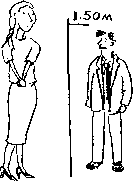
A Height (=how many metres?)
-
Mary Pimm is a very tall woman.
[not Mary Pimm is a very high woman.]
-
Tom Jakes is quite short.
[not Tom Jakes is quite low.]
-
If you aren't tall or short, you are medium height.
-
To ask if someone is tall or short, we say:
-
How tall is Mary/Tom? She's 1.60 metres tall. He's 1.48 metres tall.
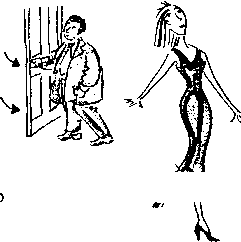
B Weight (= how many kilos?)
1.Dolly Ryan is really slim.
2.I was very thin when I was in hospital. (thin is a more negative word)
3.A rather fat man opened the door, (fat is quite negative)
4.The doctor said I am overweight. (= more kilos than is good for me)
5.How much do you weigh? I weigh 62 kilos / 74 kilos, etc.
6.
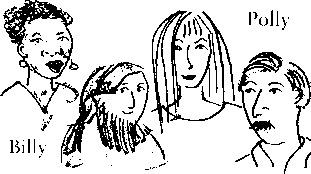
C Face and head
-
Sally has dark hair and dark skin.
-
She has brown eyes.
-
Polly has blonde (or fair) hair and fair skin.
-
She has blue eyes.
-
Billy has a beard and long hair. He has green eyes.
-
Harry has a moustache and short hair.
-
You can also use has got. For example, Sally has got dark hair and dark skin.
D Age
-
My grandmother is 97. She's very old.
-
My sister is 14. She's young, but would like to be older.
-
My father is 56. He's middle-aged, but would like to be younger!
-
This hospital is for elderly people, (more polite than old)
Looks: positive (+) and negative (-)
-
My sister is quite pretty. (+++) (usually girls/women only)
-
She's a very beautiful girl. (++++)
-
Jim's a very handsome man. (++++) (usually for men only)
-
Bob's a rather ugly man. (---)
-
I'm not ugly or beautiful, I'm just ordinary-looking! (+/-)
Unit 1.1 Describing people appearance
Exercises
-
Fill the gaps in the sentences.
-
He's only one metre 52. He's quite short.
-
Very people are often good at basketball.
-
Models are usually
-
Is her skin dark? No it's
-
She's only 12. She's very
-
If I eat too much I'll be
-
My grandmother is in this hospital. It's a hospital for people, (don't use 'old')
-
Ask questions for these answers. Use the words in brackets.
1 How tall is your brother? (your brother)
He's about one metre 75.
2 Is…………..? (Elena's hair)
No, her hair's dark.
3 Is …………..? (Mike's hair)
Yes, it is quite long.
4 Are …………? (your parents)
Not really, they're middle-aged.
5 Is …………..? (his sister)
Yes, all the boys want to go out with her.
6 Why ……….? (Sara - thin)
She has been very ill.
-
Write sentences describing the people in these pictures.

-
Suzanna's got
-
Jeff has
-
Caroline's got
-
Dick's hair is and he
-
Write down the names of three people you know. Then write about:
-
their height (tall, short, medium height)
-
their hair (colour, long, short, beard)
-
their eyes (colour)
-
their looks (ordinary, handsome, etc.)
Unit 2. Describing people character
A Opposites
Many positive words describing character have clear opposites with a negative meaning.
Positive Negative
warm and friendly cold and unfriendly
kind unkind
nice, pleasant horrible, unpleasant
generous (= happy to give/share) mean (= never gives to others)
optimistic (= thinks positively) pessimistic (= thinks negatively)
rbperfnl (= happy and smiling) miserable (= always seems unhappy)
relaxed and easy-going tense (= nervous; worries a lot; not calm)
strong weak
sensitive insensitive (= does not think about others' feelings)
honest (= always tells the truth) dishonest
For example:
-
Jane is very tense at the moment because of her exams, but she's usually quite relaxed and easy-going about most things.
-
I think the weather influences me a lot: when it's sunny I feel more cheerful and optimistic; but when it's cold and raining I get very miserable.
-
He seemed a bit unfriendly at first, but now I've got to know him I realise he's very warm and kind.
-
The shop assistant told me that the dress I tried on looked better on people younger than me.
-
I thought that was very insensitive of her, but at least she was being honest, I suppose.
В Character in action
People often talk about qualities of character that you may need in a work situation. Again, some of these words come in pairs of opposites: one positive and one negative.
Positive Negative
hard-working lazy (= never does any work)
punctual (=always on time) not very punctual; always late
reliable unreliable (= you cannot trust / depend on someone like this)
clever, bright (infml) stupid, thick (infml)
flexible inflexible (= a very fixed way of thinking; unable to change)
ambitious unambitious (= no desire to be successful and get a better job)
Some pairs of opposites do not have a particularly positive or negative meaning:
For example:
-
He is very shy when you first meet him because he finds it difficult to talk to people and make conversation; but when he knows people quite well he's much more self-confident.
-
People often say the British are very reserved (= do not show their feelings), but when you get to know them they can be very emotional like anyone else.
Unit 2.2 Describing people character
Exercises
Organise these words into pairs of opposites and put them in the columns negative and positive.
mean
clever
nice lazy
relaxed
hard-working
tense
cheerful
generous
unpleasant
stupid miserable
-
What prefix forms the opposite of each of these words? (You need three different prefixes.)

How would you describe the person in each of these descriptions?
-
He never bought me a drink all the time we were together.
-
I have to tell her what to do every minute of the working day. She wouldn't even open a window without someone's permission.
-
He often promises to do things but half the time he forgets.
-
She's always here on time.
-
I don't think he's done any work since he's been here.
-
She finds it difficult to meet people and talk to strangers.
-
He could work in any of the departments, and it doesn't matter to him if he's on his own or part of a team.
-
One of the great things about her is that she is so aware of what other people think or feel.
-
Bob, on the other hand, is the complete opposite. He is always making people angry or upset because he just doesn't consider their feelings.
The other thing about Bob is that he really wants to get the supervisor's job and then become boss for the whole department.
-
What nouns can be formed from these adjectives? Use a dictionary to help you.
for example: kind - kindness
punctual optimistic reliable lazy
confident generous ambitious stupid
sensitive strong flexible shy
Unit 3. Describing people clothes
A Clothes
B Plural words
These words are always plural in English. They need a plural verb.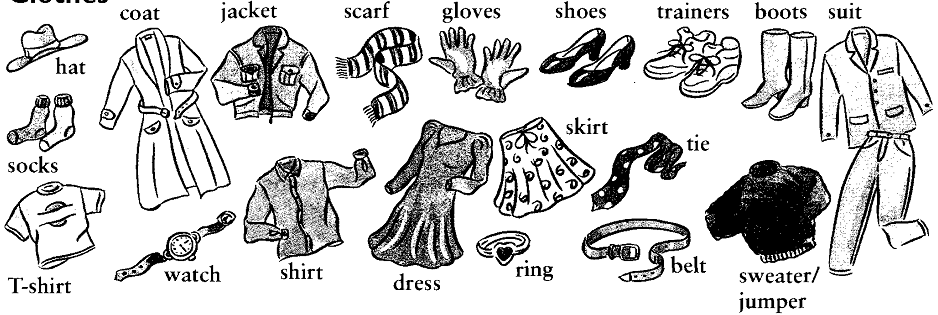

-
My suit is new but these trousers are old.
-
Her shorts/jeans/tights are blue.
Note: You say: a pair of shorts/glasses/trousers, etc.
С Verbs
You wear clothes but you carry things. [NOT use clothes]
For example:
-
Naomi is wearing a long red coat. She's carrying a suitcase
and a small handbag. -
You carry a briefcase and an umbrella.
In the morning you get dressed or put your clothes on. At night you get undressed or take your clothes off.
Unit 3.3 Describing people clothes
Exercises
man
woman
-
Put these words into one or both columns.
coat jacket dress tie belt T-shirt handbag briefcase
shoes watch suit skirt shirt ring trousers sweater
-
Match the part of the body with the item of clothing.
-
Choose one of the verbs in the box and put it in the right form.
Be wear carry have
-
John's jeans are blue and his T-shirt …………. red.
-
Julia jeans and a T-shirt today.
-
Meen……….. got a red coat on and she ……… some flowers. Where is she going?
-
Sarah's dress old but her shoes ………………. new.
-
Last year John's trousers white. Now they grey.
-
………….. this a new pair of jeans?

-
Write a paragraph about what you are wearing today.

Unit 4. Describing people feelings
A Love \ like \ hate 
-
I love my family and my best friend.
-
I like my job.
-
I don't like horror films. (I dislike (horror films) is less common.)
-
I hate my boss.
-
I prefer coffee to tea. (= I like coffee more than I like tea.)
-
I want (= I would like) a new car. (want + noun)
-
I want to buy a new car. (want + infinitive)
Note: I want my father to buy a new car. (verb + object + infinitive) [NOT I-want that ...]
-
I hope to do well in my exam, (hope + infinitive
-
I hope (that) my friend does well in his exam, (hope + that clause)
B Happy / sad / tired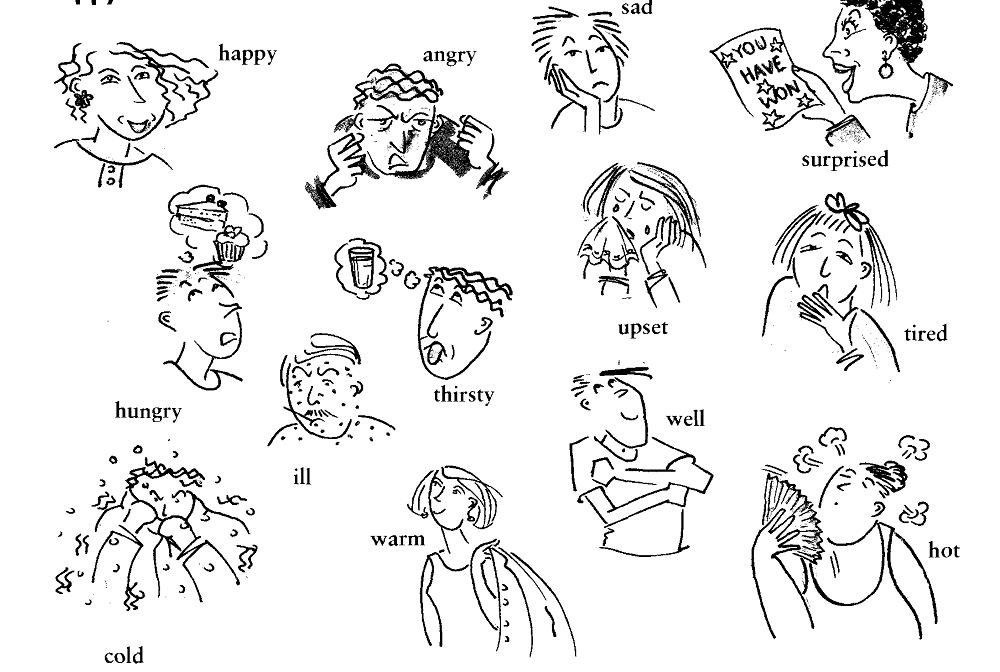
Unit 4.4 Describing people feelings
Exercises
-
Do you love, like, not like or hate these things? Write sentence.
for example: I love chocolate. I don't like chocolate. I hate chocolate.
-
chocolate
-
cowboy films
-
airplanes
-
tea
-
football
-
cats
-
cars
-
jazz music
-
Which do you prefer - tea or coffee? Write answers as in the example.
-
tea or coffee? - I prefer tea to coffee.
-
dogs or cats?
-
sunbathing or sightseeing?
-
BMWs or Rolls Royces?
-
strawberry or chocolate ice-cream?
-
watching sport or doing sport?
-
Answer these questions using want or hope.
-
You're thirsty. What do you want? - I want to drink.
-
The lesson feels very long. What do you hope?
-
You're hungry. What do you want?
-
Your friend feels ill. What do you hope?
-
You're tired. What do you want?
-
You're upset. What do you want?
-
It is very cold weather. What do you hope?
-
Look at the pictures. How do they feel? Use one of the words from В opposite.

Test
Choose the right answer:
-
He is only one metre 52. He is quite …
a) short b) tall
-
Models are usually …
a) overweight b) slim
-
Is her skin dark? No, it is …
-
blond b) dark
-
If I eat too much I will be …
-
thin b) fat
-
My grandmother is 97. She is very …
-
young b) old
-
My sister is 14. She is …
-
young b) old
-
He is a very … man.
-
pretty b) handsome
-
She is a very … woman.
-
pretty b) handsome
-
Jane is quite relaxed and … about most things.
-
easy-going b) tense
-
When it is sunny I feel more cheerful and …
-
pessimistic b) optimistic
-
People often say the British are very …
-
emotional b) reserved
-
Julia … jeans and a T-shirt today.
-
is wearing b) is carrying
-
You … a briefcase and an umbrella.
-
carry b) wear
Список используемой литературы
-
English Vocabulary in use - Michael McCarthy Felicity O'Dell. Elementary. Cambridge University Press, p. 168, 1999
-
Virginia Evans - Jenny Dooley Upspream. Elementary A2 Student's book - Express Publishing, р. 145, 2007
-
Мюллер В.К. Англо-русский и русско-английский словарь. - М.: Эксмо, p.698, 2008.
-
developingteachers.com (lesson plans, tips, articles and more)
-
etprofessional.com (reviews, practical ideas and resources)


